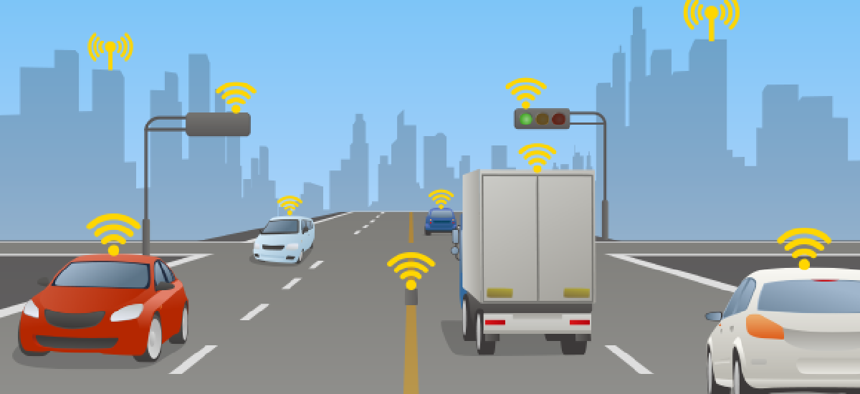Cities must adapt to autonomous vehicles

The design of sidewalks, streets, buildings and even traffic lights could change once computers are in the driver’s seat.
Self-driving cars may not be on the road in full force yet, but some researchers believe the cars could alter the way entire cities look. The design of sidewalks, streets, buildings and even traffic lights could change once computers are in the driver’s seat.
“We’re looking at the broader urban effects -- and urban opportunities -- of this technology,” Illinois Institute of Technology architect Marshall Brown told Wired. “It’s in the news a lot, but nobody’s been discussing what it will actually do to cities.”
Many questions surrounding autonomous cars are still unanswered, including how they’ll impact traffic volume. Car-sharing using autonomous vehicles has the potential to cut traffic, but at the same time, inexpensive autonomous vehicles could put more people on the road.
One of the bigger challenges facing autonomous vehicles is the roads they’ll be driving on. The Department of Transportation estimates that 65 percent of the nation’s roads are in poor condition, Reuters reported. Faded lane markers, damaged road signs, broken streetlights and many other roadway infrastructure issues are forcing automakers to develop more sophisticated sensors and maps to compensate, industry executives told the news agency.
“If the lane fades, all hell breaks loose,” Christoph Mertz, a research scientist at Carnegie Mellon University, told Reuters. “But cars have to handle these weird circumstances and have three different ways of doing things in case one fails.”
Automakers are considering radar as well as Light Detection and Ranging or LiDAR technology, which bounces light pulses off objects, giving the car information about its bearings. Mercedes told Reuters its new drive pilot system incorporates 23 sensors to see guard rails, barriers and other cars to keep the vehicle in a lane at speeds up to 84 miles per hour.
Additionally, international companies such as Germany's HERE and the Netherlands’ TomTom are working to create three-dimensional maps that can plot a vehicle's location on the road within centimeters, Chris Warrington, CEO of mapping technology company GeoDigital, told Reuters.
The Transportation Research Board, an independent group that advises the government, plans to issue recommendations for standardized lane markings for machine vision by 2017.
NEXT STORY: DARPA demos optical sense and avoid for drones





